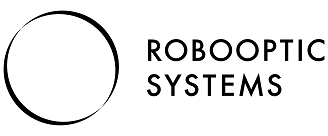Summary
Robooptic Systems offers a visual system for collimated displays. Our commitment is the complete replacement of existing CRT-based systems with matrix projectors.
The package includes projectors, special projection lenses and image-processing engines for warping and mixing, as well as hardware customisation and installation. Different displays consisting of different projectors and multiple channels can be installed to meet different performance requirements.
The system can be seen as a complete unit that handles the visual part within simulators that need to be connected to a capable IG to start training. Of course, our system also offers the Robooptic Systems speciality: the option of night vision training.
Collimated display
A collimated display is found in simulators that use a combination of two projection planes, a curved rear projection screen and a curved mirror. The projectors project a scene onto the BPS, which becomes the image source that is reflected by the curved mirror into the human eye. The collimation effect created by the curvature of the Mylar-coated mirror shows the recognisable virtual image at approximately 32 feet from the ocular point. Reducing the beam angle of the image observed at the ocular point simulates a virtual image at a greater distance than the BPS.
Projector
The projectors are fitted with a single chip DLP resolution WUXGA 1920x1200. Both LED and lamp light sources are available. The advanced 120 Hz technology allows optimised stimulation of night vision goggles with near-infrared light. Special settings on the projector guarantee movement compatibility for accelerations of 3 g or up to 10 g
Lens
A special lens was designed. Its main feature is its beam-folding mechanism to achieve an optimised position of the projectors within the BPS. Further features are an extremely wide projection angle, a cast ratio of ~ 0.3:1 and an intermediate image plane to achieve an almost perfect hardware mix. The lens also takes into account near-infrared light to ensure optimised night vision stimulation.
Warp engine / Software blending
Different engines can be used to change the image and compensate for distortions due to screen shapes or eye positions. Theoretical calculations as well as measurements in the actual system ensure correct distortion. In addition to blending hard edges, the image content can be changed to achieve continuous blending between channels.
Verschiedene Engines können verwendet werden, um das Bild zu ändern und Verzerrungen aufgrund von Bildschirmformen oder Augenpositionen auszugleichen. Theoretische Berechnungen sowie Messungen im eigentlichen System garantieren ein korrektes Verziehen. Zusätzlich zum Überblenden von harten Kanten kann der Bildinhalt geändert werden, um ein kontinuierliches Überblenden zwischen den Kanälen zu erzielen.
5- Projector system, portrait format
Illumination of a 71-inch BPS with five projectors in portrait format. The graphics show excerpts from the simulation that was carried out to evaluate the performance of the display system on the screen. Calculated are the projection area, mixing zones, mixing edges, light losses due to mismatch of the aspect ratio to the screen dimensions, as well as the effective resolution and brightness in relation to the ocular point. The aim is to make a realistic prediction of display performance to ensure compliance with the requirements.
Calculations for mixing software and hardware
Both software and hardware blending can be implemented to achieve improvements in the blending process and better contrast. Software blending creates a regime of continuous brightness reduction to smooth images together. For brightness gradients, various functions can be applied to adjust screen shapes and to take into account the projector positions. Hardware blending in addition to software blending closes remaining overlap areas with black level to increase contrast and uniformity.
Night vision stimulation
An additional near-infrared LED or a modified lamp module in combination with 120 Hz video electronics make the projectors versatile in all night and day vision training. The dimmable light output in both channels in visible and near-infrared light results in realistic simulations of night-time values in brightness, contrast and colour.
Image generator
Requirements for the IG with respect to resolution and night vision training are
- Two-channel output, visible and NVG modules implemented
- 1920 x 1200 pixel resolution at 60 Hz for both channels
